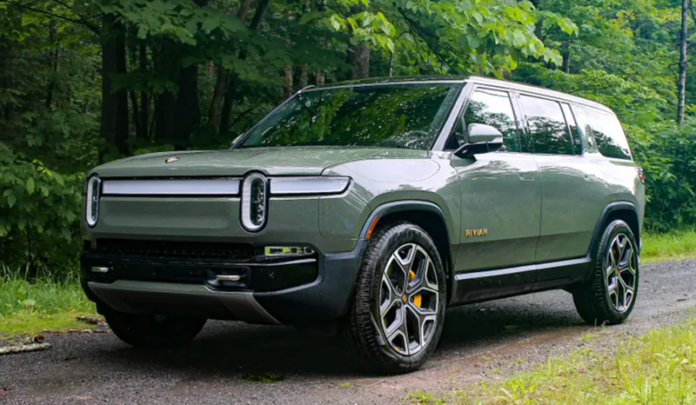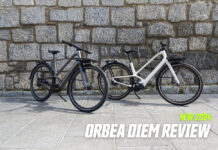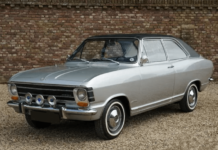[ad_1]
When Rivian was first announced, I didn’t know if they were going to survive or end up like Fiskar, Faraday, Alta, and Canoo. However, they seem to be selling well, and Ford has invested $500-Million in Rivian. Also, Amazon has ordered 100,000 delivery vans, so…lets take a look.
_______________________________________________
Rivian R1S, the “big” SUV
At this point, I believe Rivian will survive and even become quite successful. The products from Tesla have a forward-thinking and modern look, but the Rivian models appeal to a customer who wants an EV that is slightly more conventional-looking. The company was formed in Florida around 2009, just after the national economic real-estate crash of 2008.
They started as “Mainstream Motors” as an offshoot of the successful Mainstream Engineering Corp. They then changed to “Avera Motors”, but it was soon deemed to be too similar to the Hyundai Azera and Aptera Motors, and their first product proposal was for a hybrid sports car, the R1. They finally landed on the “Rivian” brand in 2011.
Porsche began producing the Cayenne hybrid sports car around this time (along with Tesla producing the fast Model-S AWD variant), and Rivian calculated that even with their higher price, the Cayenne and Model-S AWD would limit sales of a Rivian sports-hybrid. They wisely pivoted and used the polling of likely customers to determine that a large electric SUV was an under-served demographic that Rivian could succeed in.
Rivian also calculated that this same platform could be used for a 4-door truck. Nobody is stopping a Rivian truck owner from using it for construction work, but…Rivian is advertising both the truck and the SUV as a fun lifestyle vehicle.

The R1S has 7-seats, in a 2-3-2 pattern.

With all the rear seats folded down, the Rivian becomes a serious cargo-hauler.

Tesla popularized calling the front storage the “Frunk” for front-trunk. Since most EV’s have a flat drivetrain with the motors integrated into the axles, there is no engine up front. Although, this part of the vehicle is still used as a designed “crush zone” to give the driver some safety space in a collision. These design considerations are one of the reasons that all EV’s have an excellent safety record in a crash.

As of the writing of this article, Rivian has delivered over 100,000 vehicles to customers, with plenty of reservations on list. Other than the distinctive headlights, the R1S appeals to an EV owner who wants a fairly normal-looking large SUV, while being flexible enough to perform multiple functions well.
The first two R1S’s were delivered in December of 2021.
_______________________________________________
R1T, the Truck
The Rivian truck was their first product available to the public in September of 2021. Their main competition is the distinctive Tesla “Cybertruck”, the Ford Lightning, and the Chevy EV Silverado. Dodge is producing an all-electric EV truck, and also a Hybrid truck for 2025, which I am very curious about.
Its worthy to note that ALL SIX of the “trucks” mentioned above have 4-doors. I think this is a reflection of the need to have a vehicle that is flexible and can handle several different functions in a family, when the purchase price is as significant as these are.

Rivian has been very proactive about adding features that appeal to campers. The tent above is made by Yakima. There are power sockets located all around the R1T, providing 12V DC, 120V AC, and 4V USB-C. All Rivians have the option of choosing an AWD drivetrain for off-road use.

The “Gear Tunnel” behind the rear seat always seems to get an enthusiastic response. The doors to the pass-through storage will open to lay flat. I thought that was handy, but an owner told me they are definitely strong enough to sit on (up to 250-lbs), and that’s handy for putting on snow-skis.

There is no doubt that third-party companies will produce clever accessories for the R1T, but Rivian came out of the gate swinging with their slide-out / fold-up “camp kitchen”. It features two electric induction heater units, so the pots and skillets will need to be cast-iron or steel.
Induction cook-tops heat up the skillet extremely fast, and they cool down very fast to, when turned off. Of course the pot of stew will stay hot, but the cooktop is safe to touch (or stow away) after only a few seconds.
The R1S and R1T frunks have a drain, so you have the option to fill it with ice and a few beverages, if needed.
_______________________________________________
R2, the mid-sized SUV
If you’ve seen the R1S, you pretty much have seen the R2, except that this model is 15-inches shorter, and 4-inches narrower. It’s built on their smaller platform, and that same platform is also used in the R3 farther below.

The full-sized R1S has three rows of seats, and the smaller R2 here has only two rows to hold five people. However, the front seats are very cleverly designed to be able to slide back, and then fold flat. I have seen many front seats that lean forward, but these actually fold completely flat, which is expected to be popular with campers, after filling up an air mattress.

The Rivian R2 fold-flat front seats
________________________________________________
R3, the small Crossover
The R3 is built on the same smaller platform as the R2 above, but in order to tell which one it is at a distance, notice that the body behind the rear tire is clipped very short, and the rear hatch is angled, making it a “crossover”. I would argue that this is the best-looking Rivian, and I suspect it will be very popular.

Since the R3 is the lightest Rivian, it will also be the platform that they use for their R3 “X” high-performance model, which will use three motors. Two motors in the rear, and one up front.

The base-model R3 is expected to sell quite well in 2026 based on polling data. Rivian is aiming for an MSRP of $45,000
_______________________________________________
The Delivery Van
Amazon has committed to purchasing 100,000 of the new delivery vehicle from Rivian, and Amazons website states that over 10,000 have already been delivered. They are now on the roads in the US, with an additional 300 being used in Germany.
This model is the EDV-700, for “Electric Delivery Van”, with 700 cubic feet of carrying capacity. They have stated that there will be a 500 cubic feet version, and also a 900. The only driveline configuration so far on the EDV-700 is a dual-motor front-wheel-drive, with an optional AWD version to come soon. All versions will have regenerative braking.
Delivery drivers carry a van-specific fob in their pocket, and when they leave the van to walk to a delivery point, the drivers door will close and lock automatically. Then, as the driver returns, the door automatically unlocks and opens.

The range requested by Amazon is only 150-miles, and this is based on their extensive data analysis of their enormous volume of deliveries over the past few years. Bear in mind that they have the option of using a high-amp “fast charge” every time the van is at the depot, while being loaded with more packages. However, an Amazon shipping manager stated that in real-world use, these vans rarely exceed 100 miles in a day, on the type of routes that they have been assigned.

The back door is a roll-up that can be opened manually or automatically with an electric motor. Whenever the driver puts the van into drive-mode, this door closes automatically. Drivers that are 6-foot 2-inches tall have said that they do not bump their heads, and do not need to hunch-over anywhere inside this model.
The pic below shows that…even though the Rivian personal vehicles must currently use an adapter to access the national network of “NACS” charge stations (to see our article on NACS charge ports, click here), Amazon has requested that NACS be the factory-installed charge format, which is also used by Ford, Toyota, GM, Volvo, and Tesla.
The two large pins at bottom are the “high amp” fast-charge connectors, which are typically used when a battery pack has a state-of-charge below 80%. Lithium batteries can get hot if they are not slow-charged during the top 80%-100%, and keeping them cool is one of the ways you can help the battery last as long as possible (to see our article on how to make your lithium batteries last a long time, click here).

Cold weather variants have heated steering wheels, heated seats, and heated rear-view mirrors. The windshield has an embedded heater, instead of relying on the standard warm-air heater. Amazon has stated that some locations in snowy climates will get an AWD version as soon as they are produced.

A feature that jumped out at me was that the bottom skirt around the entire van is made from a rugged corrosion-resistant polymer.
I grew up in southern California, so it was quite an adjustment to me when I spent a few months in Chicago during a horrific winter in 1977. Places like that spread salt on the roads to prevent ice formation. However, the downside is that even fairly new cars had a shocking amount of rust and deep corrosion in their wheel-wells.
I live in Kansas now, and I recently sold my 32-year-old Toyota due to body corrosion (yes, it still ran fine!). I believe many vehicles would benefit from the bottom 1/4 of the body being made just like these Amazon vans. If you scroll back up through the previous pictures, you will see that all the Rivian’s appear to have a polymer bottom skirt integrated into the body, though they are not quite as wide as the skirt on the delivery vans here.
_______________________________________________
The Batteries
Rather than list the kilowatts-hours, I’d prefer to state that Rivian has several battery pack options, from 270-miles up to over 400 miles. Of course the longer-range battery packs are heavier and more expensive.
The R1T pack in this video below has nine 150-lb modules that are connected in series to produce the total system voltage. Each module is a double stack of vertical Samsung 2170-format cells (cylindrical, 21mm in diameter, 70mm long), roughly seven inches thick.
Each “block” module holds 864 cells configured as 12S, meaning 12 cells in Series. Since there are nine of these blocks, the R1T pack is 108S. This means that its “nominal” average voltage is 108S x 3.6V = 388V. When it is fully charged to 4.1V per cell, it would rest at 443V.
The R2 and R3 are slated to use a large “4695” cell (46mm diameter, 95mm long).
Tesla has already begun producing a “4680” format of cells for the Model-Y. As the numbers suggest, compared to the now-common 2170 cell, it is twice as fat and slightly longer. Using a physically larger cell reduces the number of cells and cell-connections, which are both a good thing. The engineering limit to making the cells even larger is the issue of getting heat out of the center of each cell. Heat is one of the biggest factors in the cell degrading over time.

One of the great things about the new Tesla 4680 cells is it’s “tabless” design. Cylindrical cells are actually very long flat cells that are rolled up. Rather than insert a few tabs to pull current from several places in the roll, Tesla made the entire length of the long edges to act as the inlet and outlet to current. This does three beneficial things.
First, it removes traditional bottlenecks to current, and the tabless cells can release more peak amps without forming hot-spots inside, for incredible performance. Second, current flows both ways, and the tabless design allows for a more rapid charging without forming hot-spots inside. Third, even in applications where high amps are never used, the tabless design prevents hot spots from forming inside the cell in the first place. This eases the load for the design of any battery pack cooling system, and it greatly enhances pack life.
BMW recently revealed samples of a 4695 cell it plans to use in its “Neue Klasse” of EVs from 2025 onwards. Several battery manufacturers are now producing cells in this 46mm diameter form factor, including the “big-three” Samsung, Panasonic, and LG. I suspect that the R2 / R3 will use a single-stack of the 4695 cell, and that is why they chose the slightly longer 4695 cell instead of the Tesla 4680 format.
_______________________________________________
As a Business
The factory for the R1S/R1T and the delivery vans is in the city of Normal, Illinois. It is located halfway between St Louis and Chicago.
They have paused construction of a new facility in Stanton Springs, Georgia. They had considered building a new factory there for the R2 and R3 models, but they recently opted instead to add to the Illinois plant, and run two shifts to produce all of their models there.
The R2 and R3 models are anticipated to be available for purchase in 2026.
By the end of 2021, the company had produced 1,015 vehicles. In 2022 Rivian produced 24,337 vehicles. Rivian produced 57,232 vehicles in 2023 and expects to make roughly the same number in 2024. Rivian celebrated manufacturing their 100,000th vehicle on April 3rd, 2023.
One of their first investments was back in 2017 when the company received $450 million from Sumitomo Corporation and Jameel Investment Management Corporation. In 2019, Ford Motor Group invested nearly $500 million, and Amazon invested $700 million. These two investments provided the company with another $1.2 billion. With this purchase, Amazon officially gained the largest stake in the company, owning 22% of Rivian. Cox Automotive, Black Rock, and T. Rowe Price have also invested in Rivian.
_______________________________________________
Random Features
Power. EV’s are known for their inherent hard acceleration, with instant torque being a characteristic of all electric motors. This means the R1T has a strong towing capacity. Also, the performance package can accelerate from 0-60 MPH in 3.5 seconds.
Power Outlets. The R1S and R1T both have quite a few electrical sockets scattered around the vehicle, with at least two 120V sockets each. The inverter is officially rated for 1500W, but owners have posted that they have used 1800W camping and cooking accessories without issue.

Air suspension. When you need to get over an obstacle, the suspension can raise the body an additional six inches, allowing a total of 14 inches of ground clearance. When camping on an uneven surface, there is a leveling feature where each wheel is individually adjusted to make the interior flat and even.
Flashlight. I always have a rechargeable flashlight in all of my cars. Its not because I want to save money on the cost of batteries. Its just that when I need my flashlight the most, it always seems like it’s low on charge, and my spare batteries were used and not replaced. Just plug the flashlight into a 12V accessory port with an adapter, or a 4V USB-C port for a few minutes, and its ready to go. The Rivian’s come with a factory-installed rechargeable flashlight using a 2170 Lithium cell, and a charging storage port built into the drivers door-jamb.
Air Pump. I also equip all my cars with a 12V air pump for the tires. Rivian includes a built-in 12V air pump in all Rivians, which is handy for topping-off a low tire, or filling up a camping mattress.
Flat Floor. To be fair, all EV’s can have this. because there is no driveshaft. The entire floor is flat, which means that there is a wonderful amount of storage space under the seats, and plenty of foot-room for passengers.
_______________________________________________
LINKS
Here is Rivian’s offical home page
Here is the reddit chat forum for Rivians
Here is Rivian’s Wikipedia page
_______________________________________________
Written by Ron/spinningmagnets, April 2023
[ad_2]
Source link














